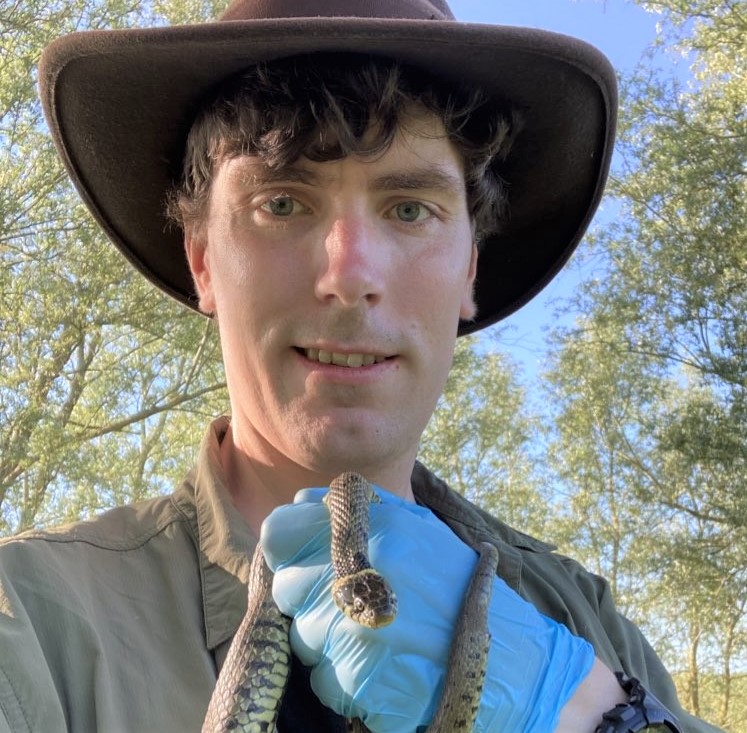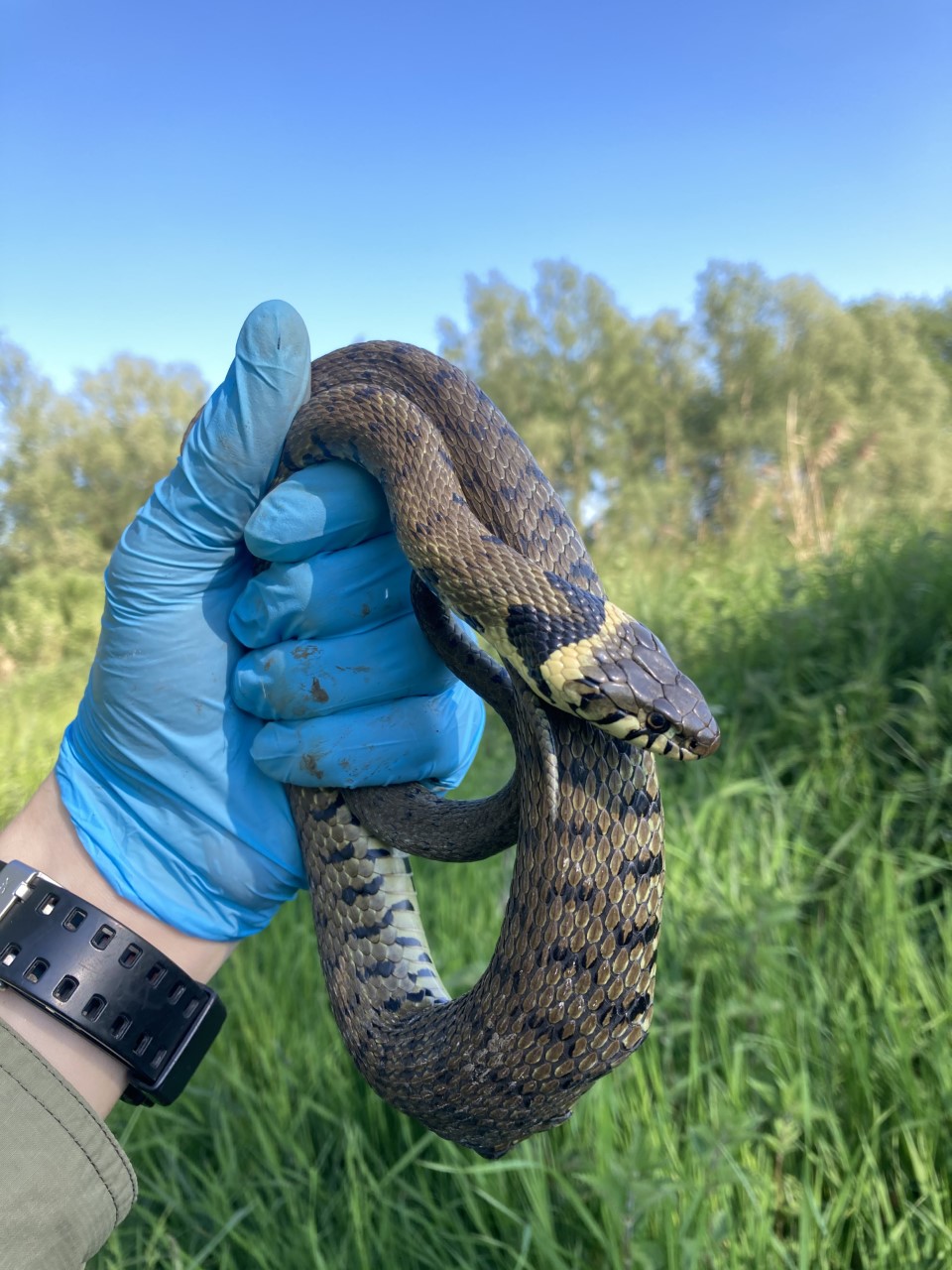
Herpetologist Steve Allain has been ‘migrating’ regularly to Norfolk collecting data for his PhD and catching his study species, which he acknowledges might not be everyone’s cup of tea…
‘For the past three summers, I have been making an annual migration to rural Norfolk, much like birds such as cuckoos and reed warblers. Instead of spending time in this oasis for the birdlife, I’ve been there collect the data needed for my PhD by catching my study species. Grass snakes. My time in Norfolk has typically been between May and October, although due to the COVID-19 pandemic, my survey period in 2020 was restricted to July to October. This means that I’m able to survey grass snakes throughout the majority of their active period, catching them as they emerge from hibernation all the through to when they’re about to re-enter hibernation for the winter months. This gives me a unique snapshot of the snake’s activity, as well as maximising my chances of gathering enough data as possible.
They may not be everyone’s cup of tea, but I think they’re extremely beautiful and underappreciated.

So how do I go about collecting such data? At my study site, I used a number of artificial cover objects which create a favourable microhabitat for the snakes to bask under. In my case, my material of choice was onduline roofing sheets, which are a rigid but corrugated bitumen sheeting often used to roof sheds. Other alternatives include tiles of roofing felt or corrugated steel. I checked these on a regular basis (twice daily if the weather permitted), catching any snakes beneath by hand. Thankfully, grass snakes are non-venomous and so I wasn’t at in any danger in handling wild snakes. The capture and processing protocol was designed to reduce the levels of stress snakes experienced, whilst still also giving me the freedom to the collect the data I required. The unnecessary capture and handling of wild snakes should be refrained, unless being conducted for legitimate purposes, such as research.

The data I collected ranged from the sex of the snakes, their length, weight, whether they’d eaten recently (which results in quite a visible bulge along their body), and the presence of skin lesions. My research focusses on the population dynamics of grass snakes, so it is important to know who is who. In order to do this, I took photos of every snake’s belly scales as they have a unique pattern – much like fingerprints. This allowed me to go back and compare all of the photos, to build a capture history which I shall be analysing next. Going back to the skin lesions, another aspect of my research is investigating the presence of ophidiomycosis (formerly snake fungal disease), and the effects on populations. If snakes had skin lesions present, then I’d swab these in order to run some diagnostics in the lab at a later date (watch this space!).

I’ve still got a mountain to climb in terms of completing my lab work, analysing my data and writing the chapters of my thesis. I’m certainly going to miss spending my days chasing grass snakes around a private nature reserve! However, the hardest part of the process is out of the way. Among study animals, snakes are some of the trickiest to study as the probability of detection (even at an ideal site), is quite low. Thankfully, I’ve got everything I need now to finish my project. It’s just a matter of trying to fit everything in and getting my head down.’
If you’ve got any questions, check out Steve’e website or feel free to contact him via email.




